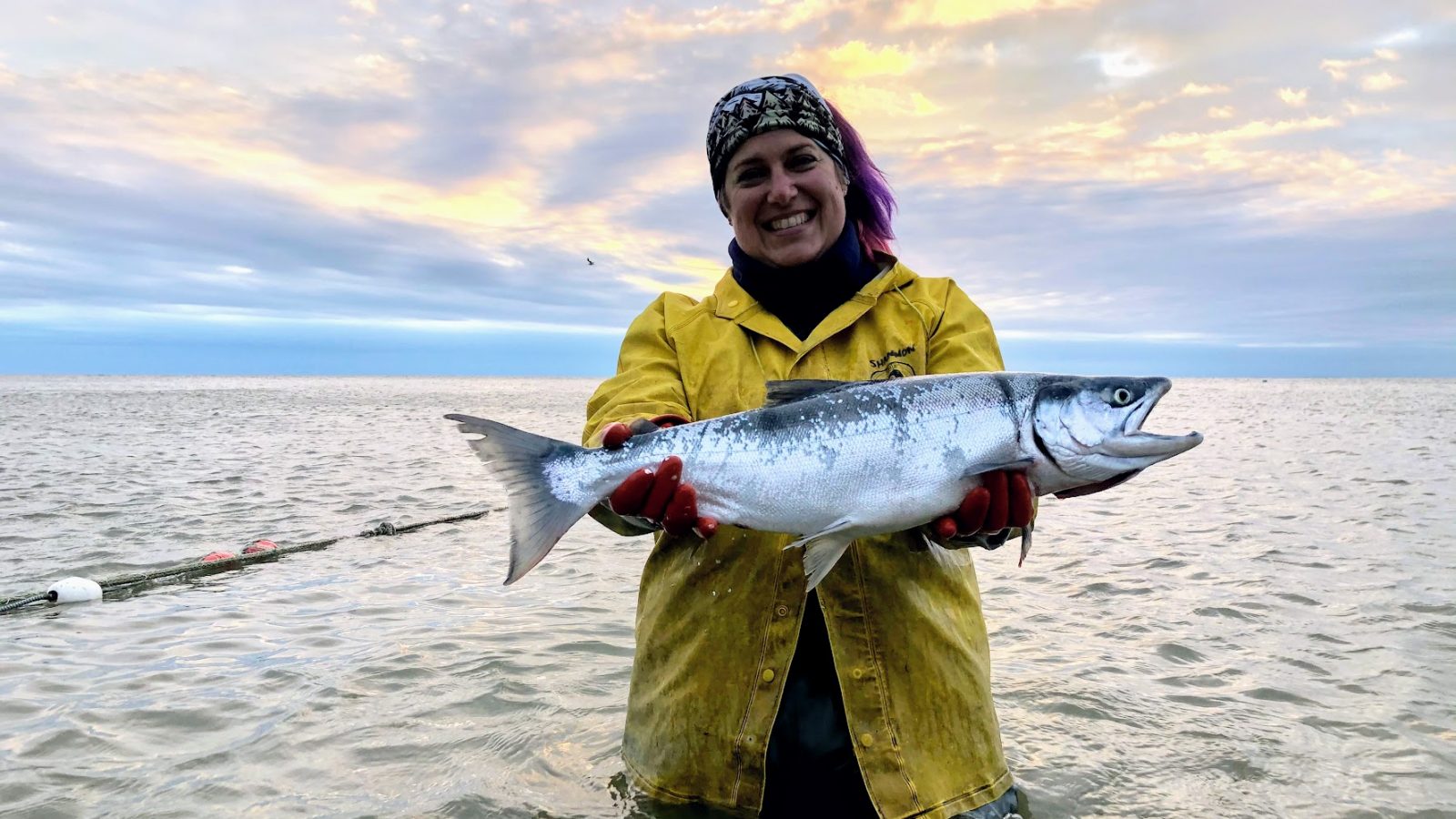
Shannon Ford Ward comes from a long line of Alaskan fishermen. Bristol Bay has been her family’s fishing grounds for five generations, and before that, her ancestors fished off the coast of Washington state. We spoke to Shannon about her fishing heritage, the culture she is proud to be part of, and the industry practices that will help protect Alaska’s seafood bounty for the future.
When did you first step onto a commercial fishing boat?
I was a small child. My family has been commercial fishing in Alaska for five generations, starting in 1933; it makes this year our 90th anniversary. My family moved to Alaska during the Gold Rush and Great Depression, and before that, they were fishermen in coastal Washington state. Our family fish camp has been in existence since the 1950s. When I was 9, I was sent to fish camp to work for my grandmother. It’s a family tradition I’m so pleased to share now with my own daughter. She’s 6 years old, and her first season was as a 6-month-old baby.
Can you tell us more about fish camp?
At camp, we have no electricity or running water. We spend leisure time picking berries, walking on the beach, having community bonfires, sharing meals, reading, playing games, and lots and lots of visiting.
I love being at our family camp with my cousins and now my husband and daughter. It’s a lifetime of memories plus connections back to previous generations. We have the privilege of being so close to wildlife on a daily basis: bears, eagles, beluga whales, foxes, ravens, migratory shorebirds and more.
What makes fishing in Alaskan waters so unique?
I know with absolute certainty that I’m part of an industry that provides the planet’s most perfect protein. And as we enjoy record runs of salmon returning each year, it’s a totally sustainable resource that should continue for generations to come.
I am so thankful to have been born into something that’s become extremely rare on earth – harvestable species that still thrives at historical levels. Biologists have done core samples, and our salmon are returning in the same average numbers as they have as far back as the record can be traced.
What might someone in the UK not know about Alaskan fishing culture?
It’s a state-wide point of pride. Alaska’s seafood and fishing culture is as much a part of the yearly cycle as Christmas or the start of school. We structure our lives around our fishing seasons. Even when it’s not that time of year, we are talking to each other about it, making plans, buying equipment, and obsessively checking predictions and reports!
Families will return to their home villages to put up fish for the winter, often sending a supply to members who might live elsewhere. Providing for the elders is a common practice. Fishing is an activity that brings together whole communities.
What ways have the Alaska Seafood Marketing Institute or other industry bodies supported your business and livelihood?
ASMI and some other regional organisations have been so crucial in supporting me. As fishermen, we are close to that aspect of the industry, but perhaps not as much to the end market. It gives us credibility to connect with a reputable source. It’s also a mental boost to see our seafood presented in such an uplifting way; we know and love it, but to see our fish marketed as a premium product by a respected organisation helps me to feel that I’m doing the right thing with my life.
What are some of the ways your work practices ensure sustainability?
Like all of Alaska’s fisheries, we are regulated to protect future production and returns. Based on biologist research, the Alaska Department of Fish and Game establishes escapement goals for the season – that is, how many salmon they want to get up the rivers to spawn. During the [season], they count how many fish get there and open or close our fishing periods to make sure the goal is reached. This system was established with statehood.
We also use biodegradable soaps for cleaning the boat, gear, ourselves, and our clothes. We take good care of our camp and the area of tundra that’s our seasonal home. And we take our rubbish to an approved station, including anything that might wash up on the beach from other boats.
What would you like to see for the next generation of Alaska’s fishing communities?
I would love to see more families able to make enough of a living to include upcoming generations in the commercial fisheries. This includes infrastructure, education, and work opportunities.
Part of that picture would also feature preserving and passing on the traditions of heritage foods. I love seeing the elders teach what they have done their entire lives. The way I make caviar (salmon roe) is a direct result of learning from one of our village elders when I was interested in making my own. Now my daughter sits beside me and helps, so she also will know how to make it.
These waters have sustained humans for thousands of years. Continuing to appreciate and benefit from the seafood is both a right and a privilege.


